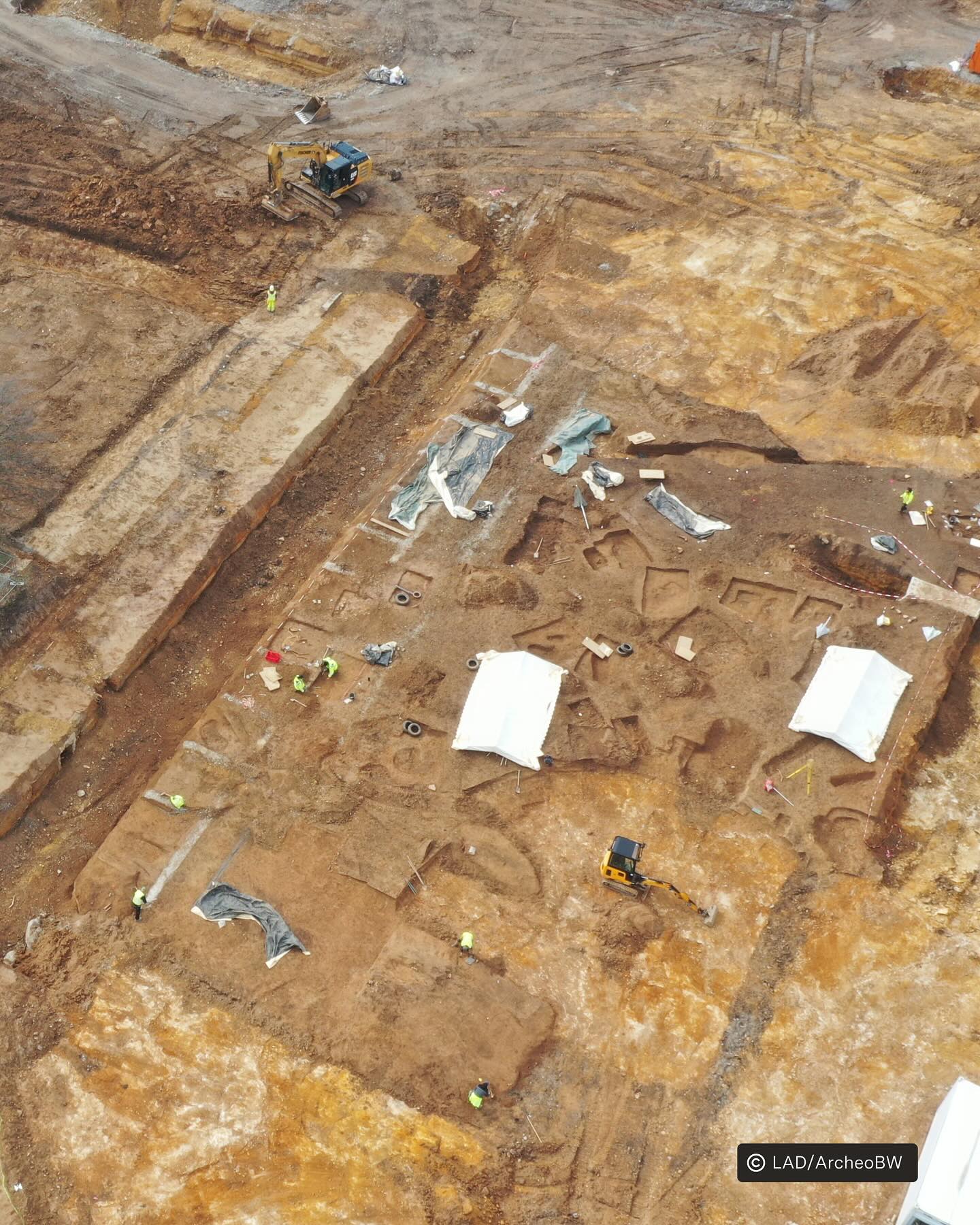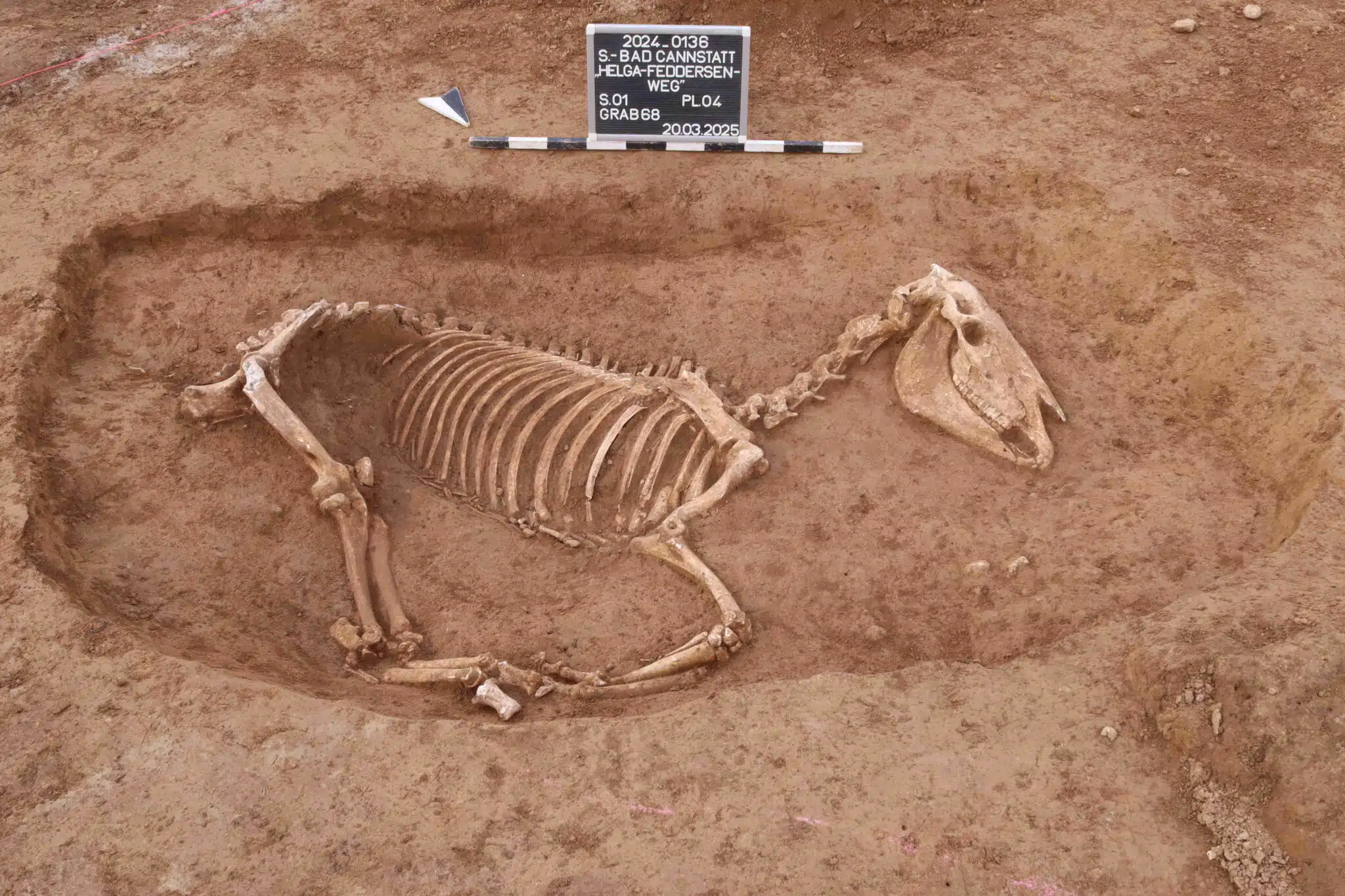Over 100 horse skeletons dating back to the 2nd century AD have been unearthed in an ancient Roman cemetery in southern Germany, shedding light on the role of animals in ancient military life. One burial, in particular, stands out to archaeologists.
Ahead of a planned construction project, archaeologists began excavating an area in Stuttgart in the summer of 2024. Stuttgart, located in southwestern Germany, is approximately 400 miles southwest of Berlin. Based on previous finds in the area, including scattered horse bones, experts anticipated uncovering remnants of a Roman cavalry presence. However, what they discovered far exceeded expectations.
The State Office for Monument Preservation (LAD) in Baden-Württemberg announced on April 16th the discovery of an extensive Roman cemetery. Dating back roughly 1,800 years, the cemetery contains the remains of more than 100 horses, making it one of the largest known Roman military horse cemeteries in the region.

Archaeologists believe the horses belonged to a Roman cavalry unit stationed in the area during the 2nd century AD. Historical records indicate that such a unit comprised around 500 riders and required a herd of at least 700 horses to support their daily operations, travel, and military campaigns.
The majority of the horses appear to have died from natural causes, injuries, or illnesses. Sarah Roth, the lead archaeologist on the site, stated that there was no indication of a mass death event such as war or disease. The burials were generally simple, lacking specific markers or artifacts.
A Funeral Reflecting a Personal Connection
One particular burial stood out: a single horse found interred alongside two ceramic pitchers and an oil lamp placed near its leg. These objects are typically associated with human burials in Roman culture.

Roth suggested that this burial mirrored a human funeral, indicating a strong emotional bond between the animal and its owner. “Even after about 1800 years, the mourning for this individual animal is still evident,” she explained in a statement.
Human Skeleton Raises Social Questions
The team also unearthed a solitary human skeleton on the edge of the site. Authorities believe this individual may have been an outsider excluded from the formal Roman burial grounds, raising questions about social structures during that period.
This discovery of the extensive horse cemetery provides valuable insights into the logistical aspects of the Roman military and the significant role horses played in their operations. The unique burial of the single horse further highlights the potential for deep emotional connections between humans and animals in the ancient world.





